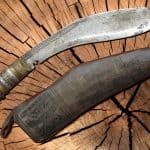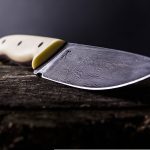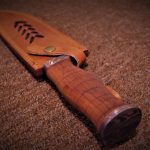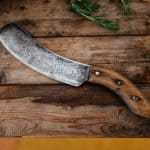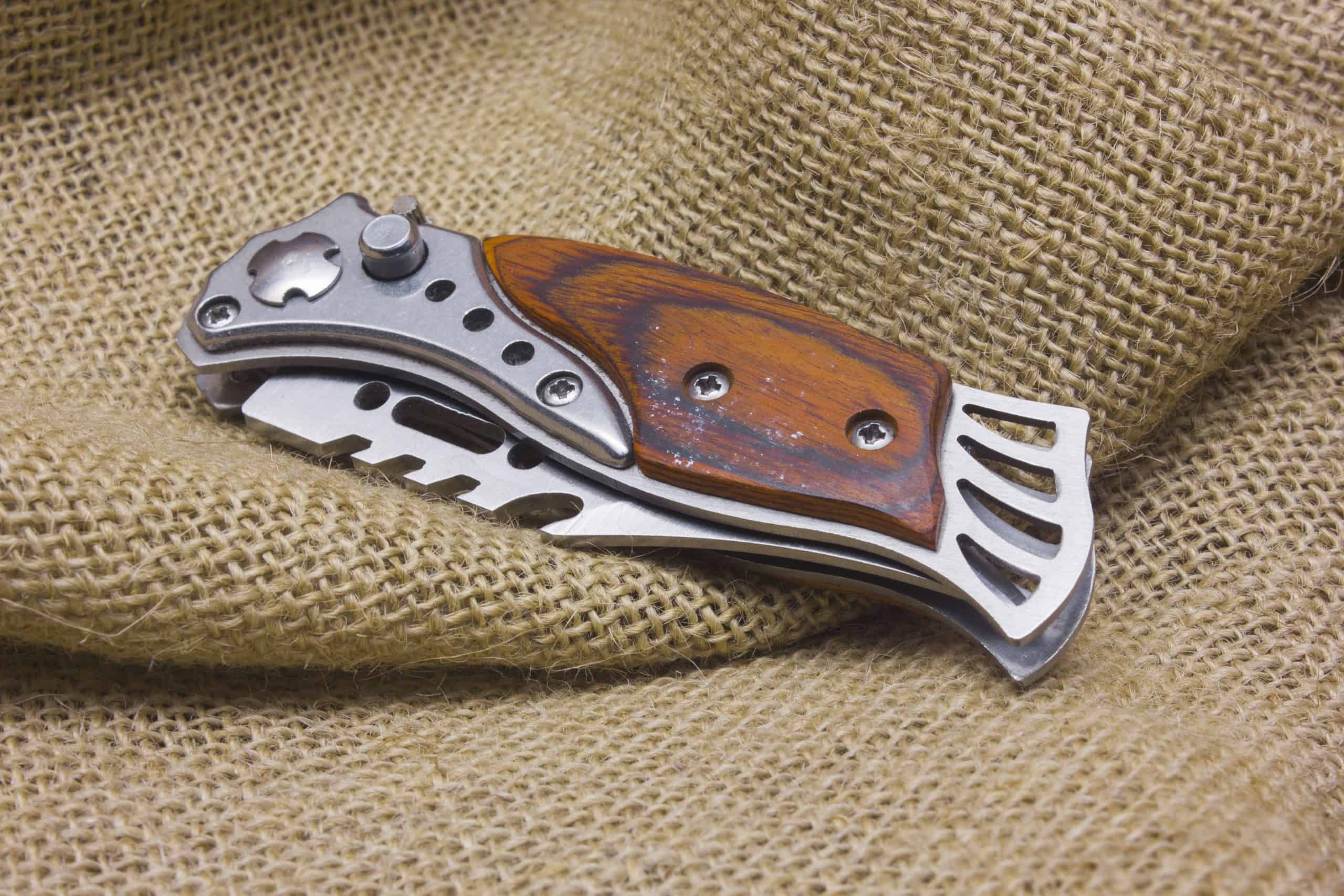
Introduction to Leather Strops
A leather strop is a tool for sharpening knives and other blades, which comes in many shapes and sizes. The basic idea behind the use of a leather strop is to bring an edge to a certain level of sharpness while still keeping it safe from damage. When properly used, it will reduce the risk of over-sharpening and help eliminate any micro-serrations in the blade edge that can reduce cutting performance.
Leather strops have been used since ancient times by sword makers, barbers, and even soldiers. In modern day usage, they are commonly seen as a necessary part of the complete sharpening process for all types of tools, knives, scissors and razors. A well-made strop should be durable enough to last through multiple uses with minimal wear on its surface due to the abrasion caused by a blade’s contact with it during honing or stropping.
The most common use for a leather strop today is in traditional knife maintenance where it is used along with abrasive compounds such as hone stones to bring your blade back to its optimal level of sharpness. It also has many other unique uses such as prepping hide for tanning or burnishing woodworking projects prior to finish application. Typically it has two sides; one smooth side made from fine or split leather and one rougher side that has been impregnated with some kind of abrasive compound anywhere from coarse pumice powders to very fine chromium oxide polishes depending on what type of finish you are looking to achieve after stropping.
To begin using your leather strop there are two stages; stropping before honing and stropping after honing both require specific techniques and attention to detail in order to get precise results when you are finished. Stropping before honing helps remove any burrs left on the edge by dulling stone and should be done until the entire bevel runs smooth across the face of your blade; this step also helps initiate an even polish profile on both sides of the blade so that maximum efficiency may be achieved during your following sharpening sessions. After honing or finishing your knife using a whetstone, polishing paste impacts, or any other method all you need do is run your blade down the rougher side of your strop several times then apply some kind of oil – quality vegetable oil being preferable – followed by buffing gently on both sides; this sequence lubricates while preserving steel structure as well as creating final micro-geometry improvements vital for razor utility
Different Types of Leather Strops and Their Benefits
There are two main types of leather strops: natural and synthetic. Natural leather strops are usually made from animal hide, such as cowhide, horsehide or kangaroo hide. They are the most common type and will provide a strop with good abrasion characteristics that gives a good polished finish to your edges. Natural leather strops can be bought in different lengths and widths; the most common sizes for general use is 2” x 12” or 3” x 18 “.
Synthetic leather strops on the other hand, are typically manufactured using polyurethane materials and offer enhanced performance sharpening compared to their natural counterparts. They have greater abrasion resistance and are able to hold up longer against aggressive material use. Furthermore, they come in different varieties of grains which allow you to adjust the abrasiveness according to your needs.
When using a leather strop it is important to ensure that it is regularly maintained with oil in order to prevent cracking or drying out of the surface material caused by frequent use. It is also important to note that while some users do prefer coarser grades of strop for aggressive stroping, caution should be taken when doing this as it can easily lead to unduly high heat build-up when sharpening which could potentially cause blade damage if not monitored closely.
How to Use a Leather Strop Properly
Step 1: Before stropping, you should prepare your knife blade for use by honing its edge to a mirror finish. This will ensure that the strop does not damage the blade or will help you obtain an even sharper edge.
Step 2: Spread the leather on a stable surface and secure it using tape so that it does not move when you are stropping.
Step 3: Once the strop is ready, apply light pressure with your left hand while steadying the strop with your right hand. Place the blade of your knife against the leather, pushing it away from your body as if you were cutting through a piece of paper by drawing inwards towards yourself – and vice versa when changing direction. Be sure to keep the blade at an angle hovering around 30 degrees (or less) while moving back and forth repeatedly over the entire length of the strop and across both sides of your knife’s edge.
Step 4: You can also add pastes, waxes, and compounds to one side of your leather strop for further refinement of your razor-sharp cutting edges. Strop compounds come in different colors based on their abrasiveness level (black = fine, brown = medium, green = coarse). Just bear in mind that you should never apply paste or compound directly onto stainless steel blades since this can damage them irreversibly if done repeatedly over time.
Step 5: Carefully remove any extra compound residue from both sides of your blade before cleaning up for storage or testing its new sharpness on ‘shaving-balloon’ test paper – preferably without touching its exposed blade tip directly!
Maintenance and Care Tips for Leather Strops.
1. Store your leather strop in a cool, dry place because exposure to excessive moisture can damage the leather.
2. Avoid using harsh chemicals or detergents on your leather strop as they will adversely affect the bindings and fibers of the leather.
3. Always use mineral oil or quality leather conditioner to restore life and softness to the leather after heavy use.
4. Before sharpening, clean any burrs and debris off the blade with a fine-tuned wire brush – never use sandpaper or steel wool as they could damage the blade’s edges.
5. Sharpen tools using light, even strokes with enough pressure to lightly grind away the metal but not so much that it damages the edges of your blades or tools. Keep sharpening linked with regular stropping on a separate level of surface for each direction (back and forth) you are working from as this will help hone an even sharper edge across your blades/tools surfaces.
6. After some time of sharpening, re-oil or condition your leather strop before continuing use as this helps reduce wear on both tool and strop while improving stroke output and quality of workmanship when done properly with minerals oils or quality conditioner specifically suitable for leather goods
Troubleshooting Common Problems Related to Leather Strop Use.
Leather strops can be an excellent tool for polishing blades, but they must be used properly in order to achieve the best results. If you seem to be having trouble using your leather strop, consider the following tips:
1. Choose a good quality leather strop. Not all strops are created equal; some will perform more effectively than others due to their construction, material and general quality. Try several different strops and see which one works best for your needs.
2. Make sure the blade is well-lubricated with honing oil before use. Proper lubrication is critical for successful sharpening and polishing; if the blade is not properly lubricated it will not glide smoothly across the surface of the strop, leading to undesired results like bit nicks on the edge of the blade.
3. Use too much pressure when stropping your knife blade as this can cause chipping or other damage to both your strop and knife blade. Instead, try using a light touch with both sides of your leather strop – always making sure that you’re stropping away from yourself – and letting the weight of your hand simply move over the surface in a swift motion.
4. Clean up after each use. Leather strops need Cared for and kept clean between uses in order to maintain their effectiveness; always use an appropriate cleaning solution prior to putting them aside between sharpening sessions
Final Thoughts
Leather strops are an essential tool for maintaining a good edge on any blade. The leather surface helps to remove burrs, refine the cutting edge and polish it to a mirror finish. Using them regularly will help keep your blades in top shape and allow them to stay sharp longer. Leather strops also have many alternative uses, including using them to smooth wood surfaces and rust removal. For knife sharpening with leather strops, we suggest starting with a medium-coarse grade before progressing to the finer grades. Lastly, follow up each sharpening session with some type of honing compound or blade oil for extra shine and durability. With proper use and maintenance, a leather strop can provide outstanding results when sharpening knives and other blades.








